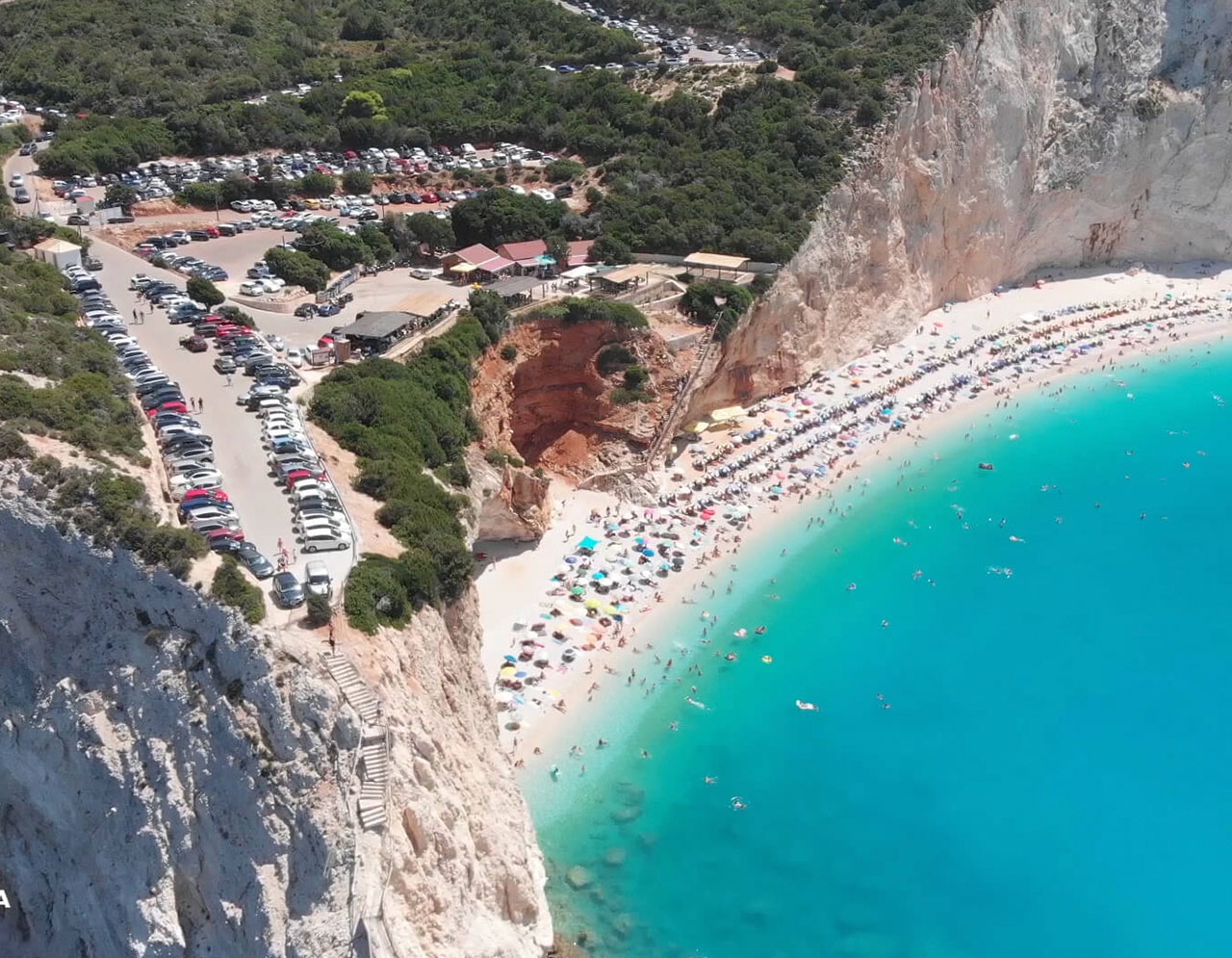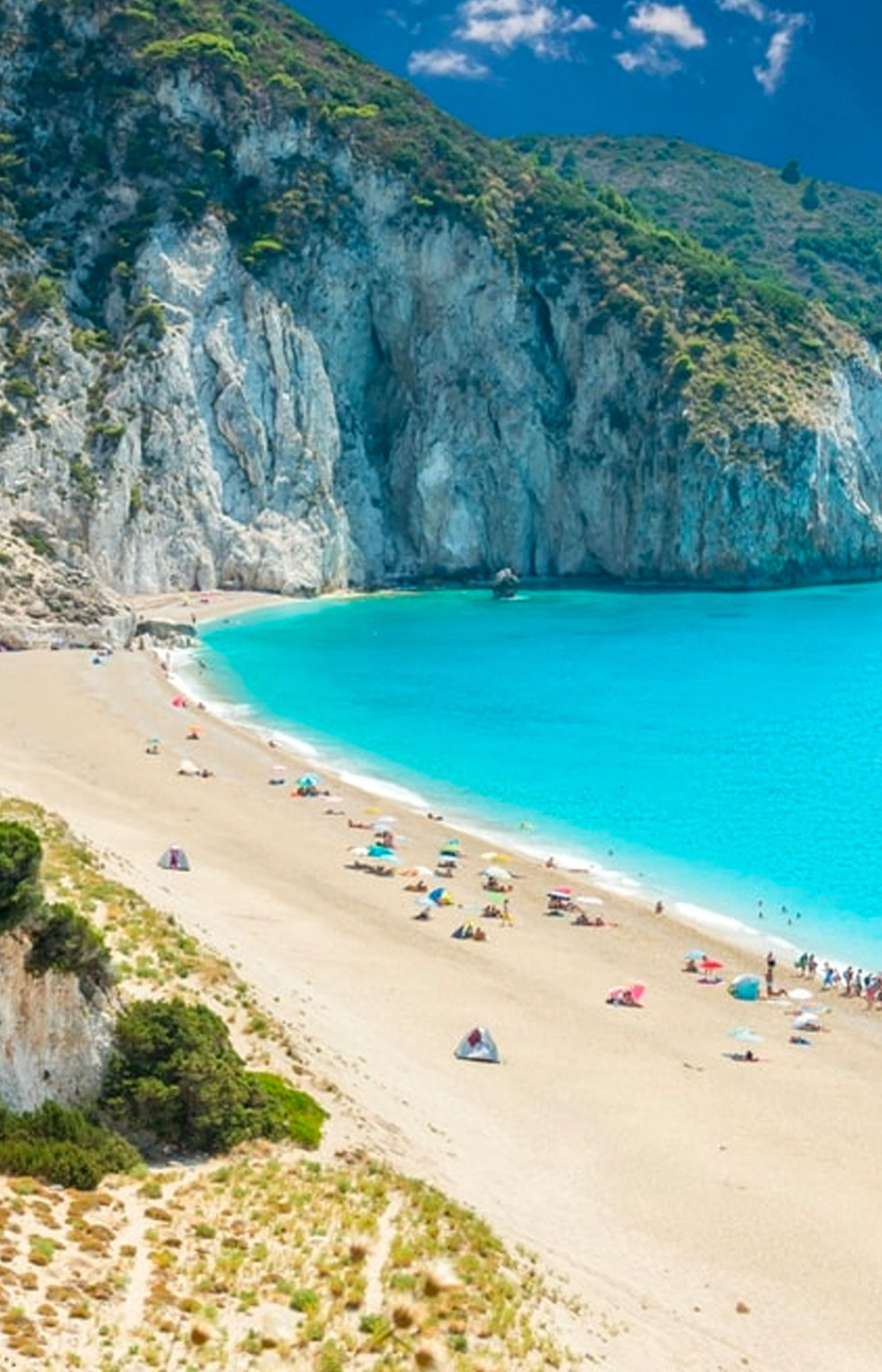
Lefkada is the fourth biggest island in the Ionian Sea and is very close to the mainland, so close that it is assumed that the island used to be attached to the mainland in the past. Nowadays, it forms the homonymous monarchy and its capital is Lefkada Town. Despite the fact that the Drepanos Channel separates the island from the mainland, there is a long causeway and a floating bridge. Hence, Lefkada is the only island that can be accessed by car. The island covers a 302.5-square-kilometer area while its population comes up to 22,879 people. Lefkada has a typical Mediterranean climate: mainly wet, hot summers and cool winters.
The whole island is a miracle of nature, full of beautiful seaside resorts and picturesque villages, built between the mountains. The majority of the mountainous areas are safe shelters, ideal for the survival and reproduction of many diverse species, and in many cases endangered ones: plants, birds and animals. The visitors are also highly likely to find plenty of caves, waterfalls and natural water taps.
The island’s economy is dependent on tourism, oil production, viticulture and fishery. The island is known for its great needlework and textile fabrics, that constitute real pieces of art and are made by traditional weavers, especially women who live in Karia, a small village in Lefkada. The traditional dishes, served in most restaurants and taverns in the island, are ‘bourdeto’, ‘bianco’ codfish, ‘fry-pie’, ‘frιgadeli’ and a variety of pies.


The island of Lefkada has a great number of really beautiful beaches, whose main characteristic is the clean, blue-green waters, a feature that makes them popular all over the world and accounts for them being considered as the most beautiful coasts, not only in Greece but also in the whole Mediterranean. On the west coasts of the island, lies the famous beach Porto Katsiki, which has been nominated by the international Press, as the best beach in the Mediterranean.





